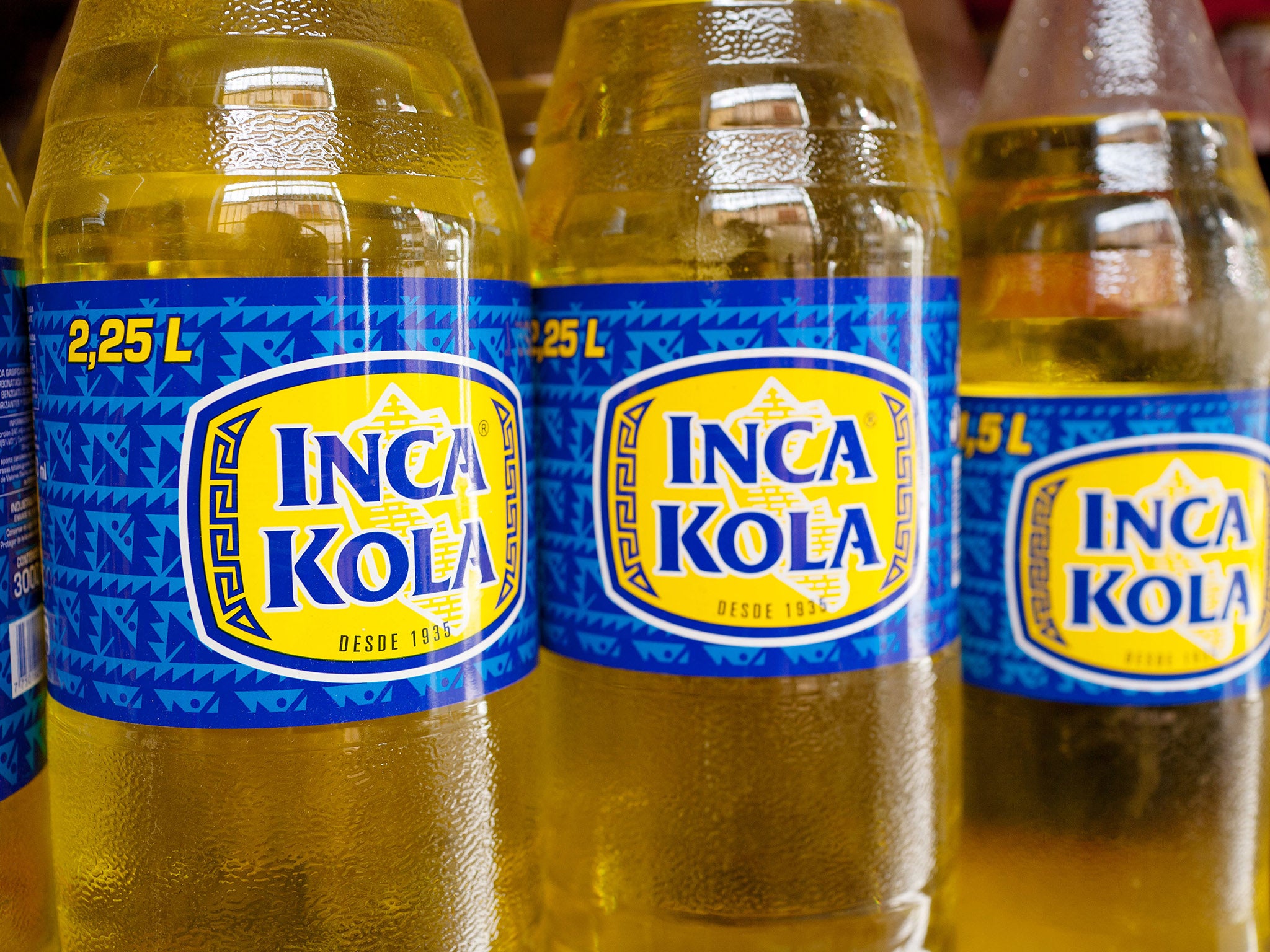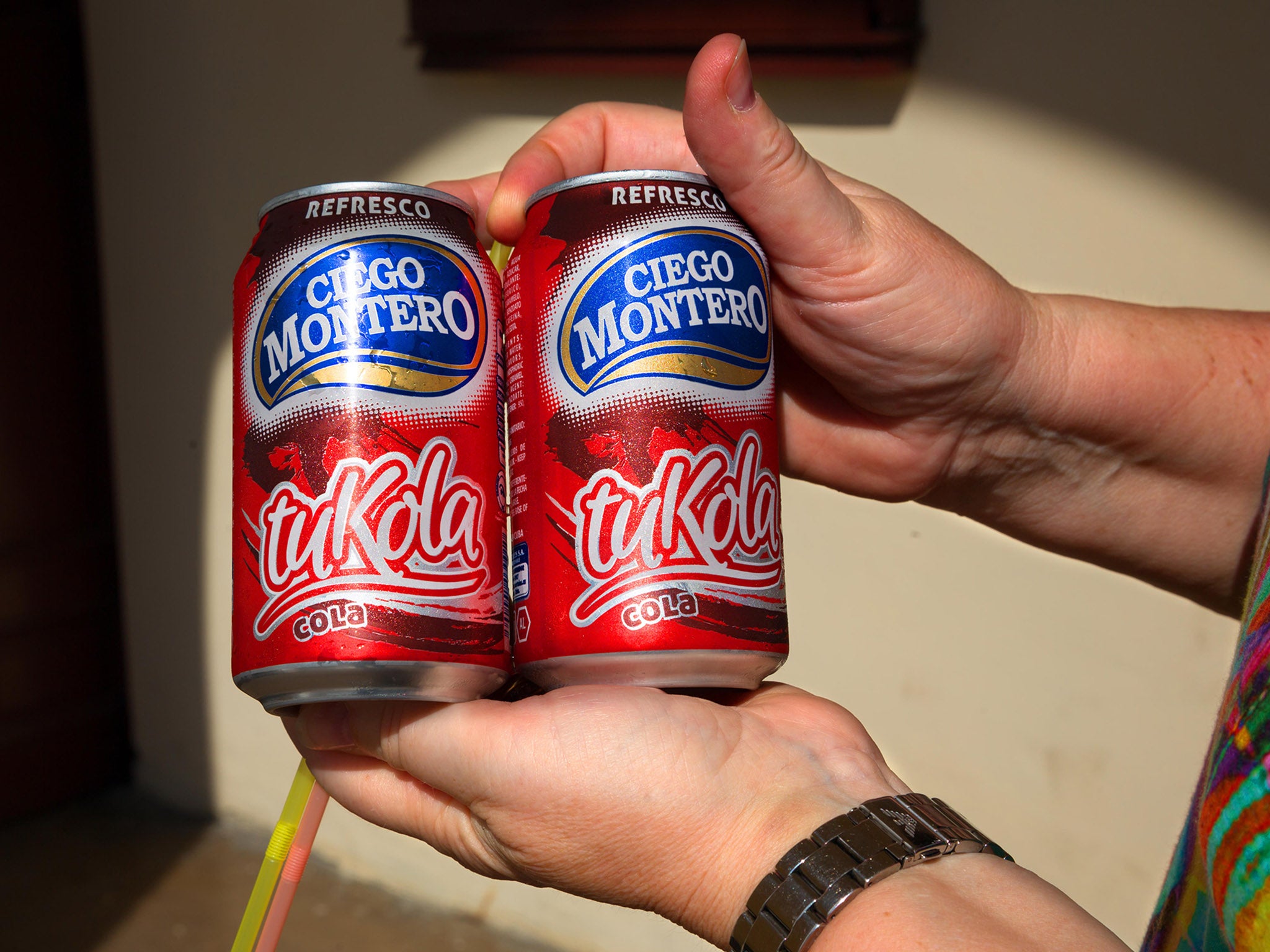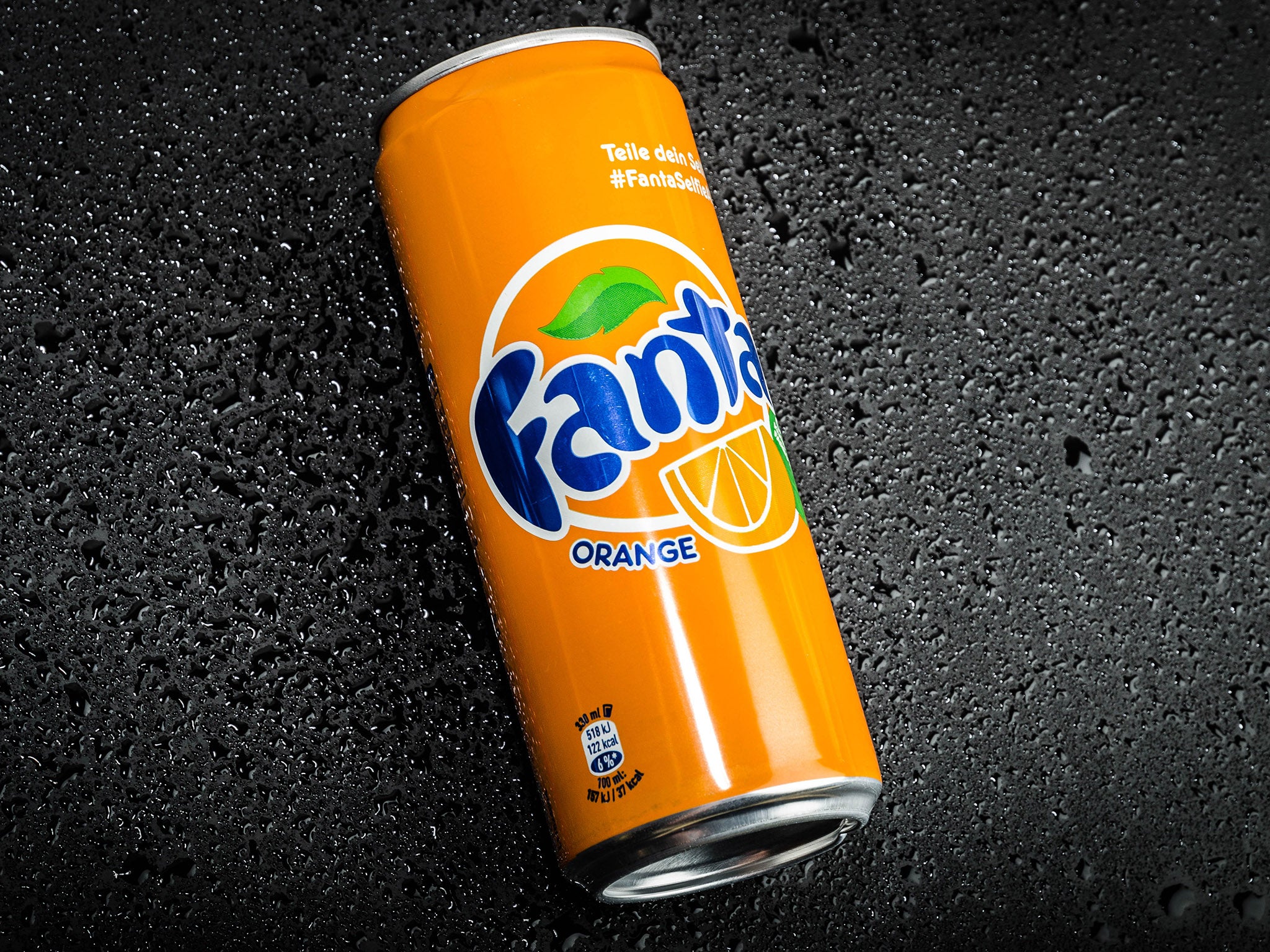From 'Nazi Coke' to Vimto in Saudi, it's not just Irn Bru: Countries' unlikely national soft drink predilections
As Scots mobilise to defend the original, sugar-laden recipe of their national soft drink, it's worth remembering that Coca-Cola isn’t the only alternative – other countries have their fizzy ‘national treasures’ too

Your support helps us to tell the story
From reproductive rights to climate change to Big Tech, The Independent is on the ground when the story is developing. Whether it's investigating the financials of Elon Musk's pro-Trump PAC or producing our latest documentary, 'The A Word', which shines a light on the American women fighting for reproductive rights, we know how important it is to parse out the facts from the messaging.
At such a critical moment in US history, we need reporters on the ground. Your donation allows us to keep sending journalists to speak to both sides of the story.
The Independent is trusted by Americans across the entire political spectrum. And unlike many other quality news outlets, we choose not to lock Americans out of our reporting and analysis with paywalls. We believe quality journalism should be available to everyone, paid for by those who can afford it.
Your support makes all the difference.It is the news that seems to have sparked something akin to a nationwide state of emergency.
The makers of Irn-Bru have announced they are cutting the sugar content of the fizzy drink by more than half.
In Scotland this has led to frantic stockpiling, of up to 250 cans at a time, before the new recipe comes in later this month.
It has led Stephen McLeod Blythe to lead the “Save Real Irn-Bru” crusade, and more than 24,000 others to sign a “Hands Off Our Irn-Bru” petition which states: “It is a national treasure in Scotland and part of our culture.
“It’s also well known to alleviate the effects of a hangover and is many a person’s craving, saviour or go-to drink after a night on the tiles. To deny people in that condition their crutch would be a crime.”
It could only happen in Scotland, you might think – especially if you have seen that map highlighting Scotland as the only country in the world where the most popular drink is not made by Coca-Cola.
It turns out, however, that other countries too have their own “national treasure” soft drinks.
And that’s partly because the legend of the brave, indomitable Scots brandishing their cans of Irn-Bru in the last remaining outpost of resistance to the global might of Coca-Cola isn’t completely true.
Take for example…
Inca Kola – Peru

It is a shade of golden yellow that might remind you of… lager, and the great South American writer Jorge Luis Borges once described it as “an implausible drink”.
But he was an Argentine.
To the Peruvians, who – like the Scots – prefer their fizzy drinks to come with a good dose of patriotism, Inca Kola is a source of intense national pride.
“Inca Kola,” Peruvian celebrity chef Hajime Kasuga once declared, “runs through the veins of Peruvian babies. That is not an exaggeration.”
Often referred to as Peru’s “national drink”, it was actually created by English immigrant Joseph Robinson Lindley in 1935.
But from the start it was marketed as being part of Peruvian national identity, with an Inca on the label and Peru’s national colour on the first delivery trucks.
Starting as a drink of the lower classes, Inca Kola is has become the preferred soft beverage of all, enjoyed, some say, because it makes them feel Peruvian – an impression helpfully reinforced by modern advertising slogans like “The drink with a national flavour,” and “Celebrate Peru”.
It also helped that Inca Kola, with its secret recipe using indigenous fruits, came to be seen as the perfect accompaniment to Peruvian cuisine.
For decades, Coca-Cola, which entered the Peruvian market in 1936, just a year after Inca Kola, struggled to compete.
During the 1980s, Inca Kola controlled 35 per cent of the Peruvian market and Coca-Cola only 21 per cent.
By 1995 Peruvians were consuming 33 million gallons of Inca Kola a year and the national fast-food chain Bembos was introducing the drink as a substitute for Coke in its restaurants.
In 1999, the Coca-Cola company decided if you can’t beat them, join them. It paid $200m for half the shares in Inca Kola, later taking control of the brand’s overseas marketing and production.
Crucially for Peruvian national pride, though, the original company formed by the Lindley family kept ownership and control of Inca Kola in Peru.
Vimto – Saudi Arabia and the Middle East

In 1968, in response to Coca-Cola opening a bottling plant in Israel, the Arab League implemented a boycott of the American company that lasted until 1991.
If that was a blow to the US, it probably helped a very British drink become a Middle Eastern institution: Vimto, invented in Manchester in 1908 by clerk turned medicinal wholesaler Noel Nichols, imported and distributed by Saudi-based Aujan Industries since 1928.
Vimto’s impact on the Middle East may also owe something to the fact that Nichols originally devised and marketed it as “Vimtonic”, the refreshing, invigorating drink that’s “full of vim and vigour”.
Because in the Middle East, Vimto has become part of Ramadan tradition, served at the family get-togethers after a day of fasting, perfect for boosting energy levels after hours without food or water.
So entrenched has the Vimto Ramadan tradition become, that in 2013 one shopper admitted he was stocking up on the stuff, despite never drinking it at any other time of year.
“It’s just what we do,” he said. “It’s what we drank as kids at this time of year and now we do the same.”
At the same time Noel Nichols’ grandson John Nichols, the non-executive chairman of Nichols Plc, which owns of the Vimto brand, told the BBC: “I think there are parts of the Middle East where Vimto is better known than parts of Britain.”
That was certainly the impression given one Ramadan when a Dubai supermarket turned an entire aisle into a cardboard Vimto castle, complete with turrets, and filled with 2,000 bottles.
TuKola – Cuba

After Coca-Cola returned to sale in Burma in 2012 following the suspension of US trade sanctions, there remained just two countries where the American drink could not officially be bought or sold: North Korea and Cuba.
If the absence from North Korea was unsurprising, there was a certain irony to the exclusion from Cuba.
In 1906 Cuba had become one of the first three countries outside the US to bottle Coke. And Coca-Cola was a key ingredient in the famous Cuba Libre cocktail, invented by an off-duty American soldier in Havana in 1900. (After he got the whole bar to try his new combination of Bacardi and Coca-Cola with a squeeze of lime, he – or a fellow soldier – proposed a toast of “¡Por Cuba Libre!”)
But after Fidel Castro came to power, US-Cuban relations cooled somewhat. Coca-Cola withdrew from Cuba in 1962, after Castro’s communist government began seizing private assets and the US imposed a trade embargo.
Since then, any Coca-Cola you see in Cuba has been smuggled into the country.
The absence of Coca-Cola in Cuba regularly causes anxiety for some Western tourists, but it has proved a godsend for Cuba’s state-owned, home-produced alternative tuKola.
For those who admired Castro, tuKola has stood as a bastion against “coca-colonisation”, to use the term first coined by 1950s French communist intellectuals (who also smashed Coca-Cola bottles, overturned trucks, and in one case also declared the fridge to be: “an American invention … A useless gadget most of the year except for making ice cubes for whiskey”).
More apolitically, tuKola has won awards for the way it tastes.
Some drinkers, especially those without a particularly sweet tooth, believe the communist alternative is better than the capitalist original.
The US TV chef Andrew Zimmern has admitted to being “just nuts” about tuKola and declared “It rocks.”
“Way better than the current American Coke formulation with high fructose corn syrup!” was another fan’s verdict.
Although not everyone agrees: “Some say there’s no difference,” observed the Uncommon Caribbean website. “Others claim tuKola tastes like crap.”
Fanta – Germany (under Nazi rule)

It would be hard to argue that Fanta was ever a national treasure, but it certainly sold in large quantities in wartime Nazi Germany, where it was invented.
Some three million cans were sold there in 1943. The Germans didn’t just like to drink it. They also used Fanta to sweeten soups and stews as a way of getting round wartime sugar rationing.
These origins and Fanta’s popularity in Hitler’s Germany have misled some into thinking of it as “the Nazi Coke”.
The truth, though, is that it was invented by a German-born and German-based Coca-Cola executive who repeatedly refused to join the Nazi party, despite the pressure placed upon him to do so.
In 1940, as head of Coca-Cola Deutschland, Max Keith was faced with the near impossibility of obtaining ingredients for a drink that was now providing jobs at 43 German bottling plants and more than 600 local distributors.
He came up with a whole new drink, made up of an ever-changing list of whatever leftovers he could get his hands on: mainly whey, (a by-product of cheese production), the remains of apples that had been pressed for cider, and some surplus fruit from Italy.
The new drink’s name came from Keith challenging his executives to come up with something using their Fantasie, (German for imagination). Senior salesman Joe Knipp immediately replied: “Fanta”.
The Germans bought the Fanta, the Coca-Cola employees kept their jobs, and for his pains Keith was investigated by Coca-Cola.
Having been unable to contact him during the war, the company’s American head office was worried about what he had been up to and where his loyalties lay.
The investigators soon found that he wasn’t a Nazi, and although he could have marketed Fanta under his name and made a fortune from it, Keith gave Coca-Cola the wartime profits made from the drink.
As peace returned to Europe, Fanta production was discontinued, but then in 1955 Coca-Cola found itself under a bit of pressure from its deadly rival Pepsi.
The upstart competitor had diversified its range of products, while Coca-Cola had stuck to selling just one thing, losing market share in the process.
Fanta was reborn, this time using oranges from Italy, not wartime leftovers. The drink is now sold in over 180 countries, in more than 90 flavours, and is said to be the second-highest selling fizzy drink in Africa – after Coca-Cola.
Subscribe to Independent Premium to bookmark this article
Want to bookmark your favourite articles and stories to read or reference later? Start your Independent Premium subscription today.
Join our commenting forum
Join thought-provoking conversations, follow other Independent readers and see their replies
Comments